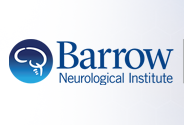Are Patients with Spontaneous CSF Otorrhea and Superior Canal Dehiscence Congenitally Predisposed to Their Disorders?
Document Type
Article
Abstract
Objectives (1) Compare lateral skull base (LSB) height/thickness in patients with spontaneous cerebrospinal fluid otorrhea (CSF), superior canal dehiscence (SCD), acoustic neuromas (AN), and otosclerosis (OTO). (2) Perform correlations between age, body mass index (BMI), sex, and LSB height/thickness. Study Design Case series with chart review. Setting Tertiary referral center. Subjects and Methods Patients with CSF, SCD, AN, and OTO diagnosed from 2006 to 2016 were included if they had high-definition temporal bone computed tomography (CT) and absence of trauma, radiation, chronic ear disease, and/or congenital anomaly. CT-based measurements included LSB height/thickness and pneumatization rates overlaying the external auditory canal (EAC), tegmen tympani (TgT), perigeniculate region (PG), and internal auditory canal (IAC). LSB height/thickness, age, sex, and BMI were statistically correlated. In total, 256 patients and 493 ears (109 CSF, 115 SCD, 269 AN/OTO) were measured. Results Patients with CSF had significantly higher BMIs than the other groups ( P < .001). Patients with CSF and SCD had similar radiographic LSB phenotypes at most measured locations. Both groups exhibited a significantly lower LSB height compared to the AN and OTO groups (mean, 3.9-4.2 mm vs 4.9-5.6 mm; P < .001). Patients with CSF and SCD also demonstrated significantly lower pneumatization rates, as low as 17% to 23% overlaying the PG and IAC ( P < .001). There were no statistically significant correlations found between age, sex, BMI, and LSB height/thickness at any measurement location in any group. Conclusions Patients with CSF and SCD exhibit similar radiographic LSB phenotypes. Age, sex, and BMI do not significantly correlate with LSB height/thickness. These data support the theory that CSF and SCD arise via similar congenital pathoetiologic mechanisms.
Medical Subject Headings
Adolescent; Adult; Age Factors; Aged; Body Mass Index; Cerebrospinal Fluid Otorrhea; Cohort Studies; Female; Genetic Predisposition to Disease; Humans; Linear Models; Magnetic Resonance Imaging; Male; Middle Aged; Neuroma, Acoustic; Otosclerosis; Prognosis; Retrospective Studies; Semicircular Canals; Sex Factors; Skull Base; Tertiary Care Centers; Tomography, X-Ray Computed; Young Adult
Publication Date
9-1-2018
Publication Title
Otolaryngology and head and neck surgery
ISSN
1097-6817
Volume
159
Issue
3
First Page
543
Last Page
552
PubMed ID
29688804
Digital Object Identifier (DOI)
10.1177/0194599818769875
Recommended Citation
Stevens, Shawn M; Hock, Kiefer; Samy, Ravi N; and Pensak, Myles L, "Are Patients with Spontaneous CSF Otorrhea and Superior Canal Dehiscence Congenitally Predisposed to Their Disorders?" (2018). ENT and Skull Base Surgery. 115.
https://scholar.barrowneuro.org/ent-and-skull-base-surgery/115


